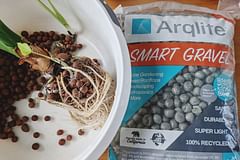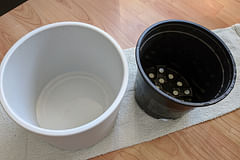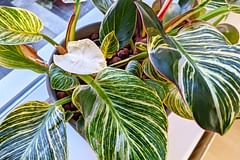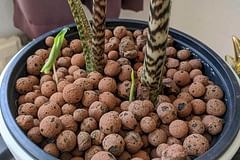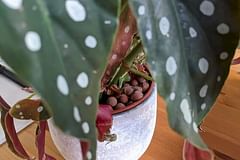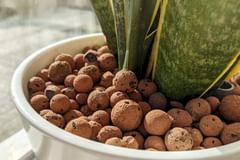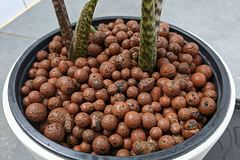What is Leca and why is it useful for plants?
Leca stands for Lightweight expanded clay aggregate. In this post, we'll go over why it is useful for growing your plants and what benefits it can offer you and your plants.
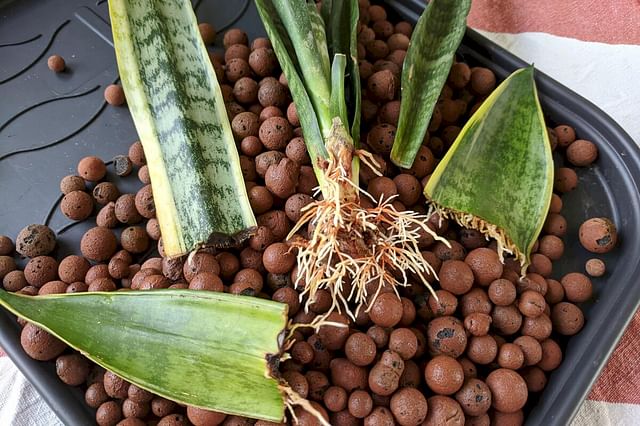
Have you had trouble with watering your plants before? If not, you're a true plant guru and I'd love to learn from you! Most plant owners have killed a few plants due to overwatering before learning what overwatering was and why their plants were dying.
Luckily, there is a "cure" for overwatering your plants and that cure is called Leca. Leca won't prevent you from overwatering your plant, but it'll make it a lot easier to water your plants properly. So if you're a little heavy-handed when it comes to watering your plants or if you just want an easier time watering your plants, Leca is right for you!
In this plant care guide, we're going to look at everything you might want to know when it comes to Leca and taking care of your plants in Leca. We'll look at these topics together:
Let's get started and learn more about using Leca to grow our plants more easily!
I love using Leca and I want to tell you all about it!
What exactly is Leca?
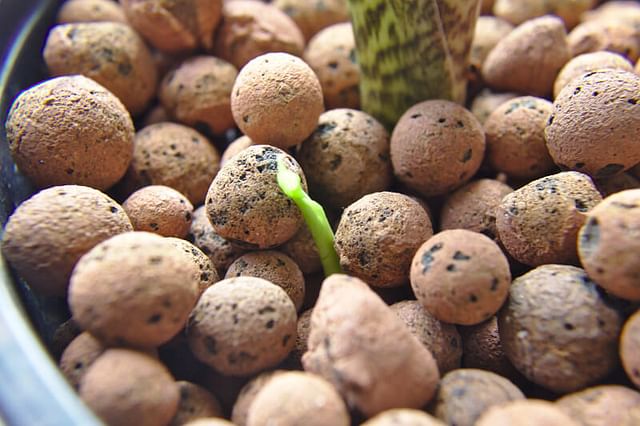
Close up of an Alocasia Zebrina growing in Leca
Leca is an acronym and it stands for: Lightweight expanded clay aggregate. It sounds very complicated, but when you break it down, it's a good and descriptive name. Essentially, Leca is a growing medium, like soil, in which you can grow your plants.
In simple terms, Leca is a collection of baked clay balls that expand when you soak them in water. The water that's soaked up in the clay balls can be used to water plants. However, unlike soil, Leca is just a collection of clay balls and doesn't contain any nutrients. All they do is soak up a little water and expand. Your plant will still need nutrients, so you'll need to add these nutrients to the water.
At this point, you might be wondering: why use Leca to grow my plants if they can't feed the plants on its own? This is an excellent question and exactly what we're going to look at in this post. Leca can't feed your plants for you, but it brings a lot of fantastic benefits that make it a great growing medium for a lot of different plants and plant owners of any skill level!
Let's see why Leca is so useful for keeping your plants healthy and thriving!
Why is Leca useful for growing your plants?
Now that you know Leca is just a collection of expanding clay balls, you might be wondering how this helps you to keep your plants healthy and thriving.
These are the biggest benefits of using Leca to grow your plants:
- It's easier to water your plants
- Less risk of root rot
- The risks of getting pests are reduced
- You can easily "check in" on your plants
Let's go over each of these benefits to see how they can help you take care of your houseplants.
Leca makes it easier to water your plants
If you've taken care of plants in soil before, you'll know that it's quite easy to overwater some plants. You can overwater your plants when the soil is wet and the roots are sitting in soaked soil. This will develop root rot quickly, which will most likely kill your plant.
To avoid overwatering your plants in soil, you have to pay close attention to how dry/wet the soil is. This is not at all the case for Leca, which is why it's so much easier to properly water your plants. We'll look at exactly how Leca helps you do this in the next section where we look at how Leca works.
If you're looking for other ways to avoid overwatering your plants, have a look at "How to avoid overwatering your plants".
Less risk of root rot
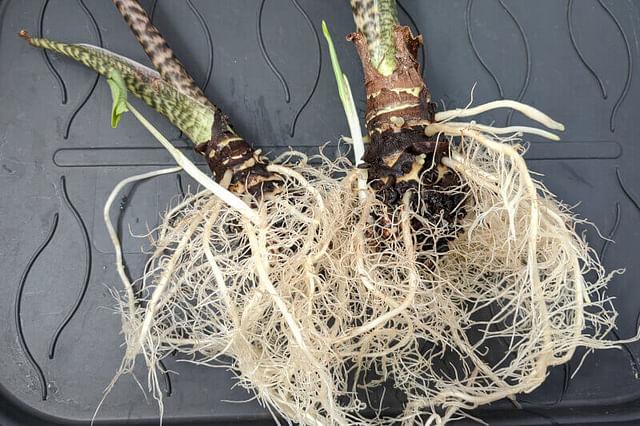
Clean roots on an Alocasia Zebrina in Leca
When you're using soil, you're watering when the soil feels dry or the plant looks a certain way. Watering is much simpler when you're using Leca because you're watering when the water in the pot is gone. When all the water is gone from the bottom of the pot, your plant has absorbed it all or the clay balls have soaked it up.
Adding extra water, even if the clay balls are still full of water, won't cause the plant to be overwatered. Your plant won't be overwatered, because the plant absorbs the moisture as it needs it. If the plant doesn't need any more water, the Leca holds onto that extra moisture until the plant is ready. If you were growing your plant in soil and you were to add more water when the soil was still soaked, you might kill the plant by overwatering it.
There is also less risk of root rot because the Leca leaves a lot of air gaps between the clay balls. This helps to get the needed oxygen to your plant's roots. A very common cause of root rot is a lack of oxygen at the roots of your plants. Leca solves this problem and worrying about root rot is a thing of the past.
The risks of getting pests are reduced
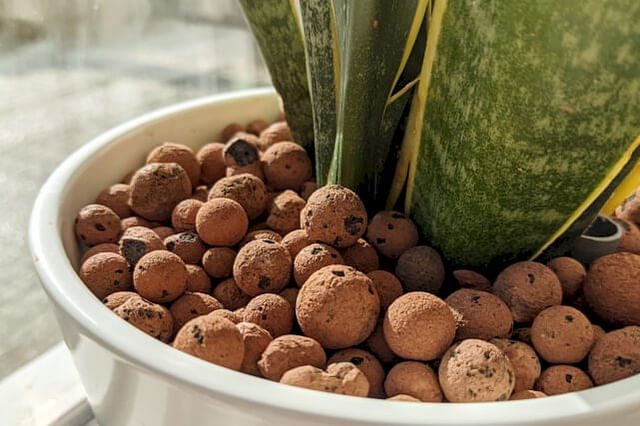
As mentioned in the previous paragraph, you water your plants in Leca where there is no more water in the bottom of the pot. The Leca lets the plant absorb moisture when it needs it and this helps to avoid overwatering. Because it's very difficult to overwater plants in this case, the chances of getting root rot are low.
One of the toughest side effects of root rot is that it attracts bugs and pests. Luckily, when you can avoid root rot altogether, you're also lowering the risk of attracting bugs to one or more plants. So indirectly, Leca also helps to reduce pests on your plants. This doesn't mean you won't have pests on your plants, but you'll have a lower risk of attracting them.
Another reason why using Leca reduces pests is because, unlike soil, Leca is not a "live" growing medium. Soil is organic and contains nutrients. These nutrients, unfortunately, aren't just a great place for your plant, but also insects. Insects usually carry and cause diseases for your plants, so by avoiding those insects, Leca helps you to reduce the chances of dealing with a sick plant.
Two of my Alocasias, the Zebrina, and Polly, were sick and their roots were rotting. This attracted insects and almost killed both of the plants. After switching them to Leca and cleaning them carefully every single week, they've recovered and are now growing again like before. It's safe to say that those plants will never touch any soil again.
You can easily "check-in" on your plants
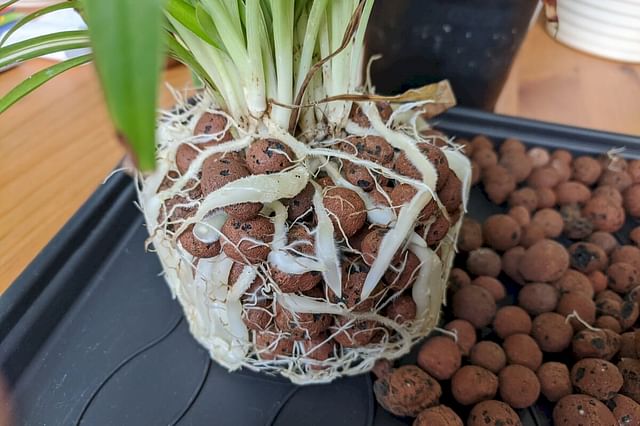
When you're growing your plants in soil, the only time you'll really see the roots is when you're in the process of repotting the plant. In between planting and repotting them, you won't know what the roots look like and how they're doing.
However, when you're growing your plants in Leca, you can look at the roots every single day if you choose to do so. This is not something you should do though, because many plants don't like to be handled that often. I clean most of my plants, which grow in Leca, at least once every 6 months. During this process, I also make sure to clean, or at least rinse, the Leca. By cleaning the Leca, I can have a look at how the roots of the plant are doing. The picture at the top of this post is an example of this. I can look at the progress of the roots and adjust the placement of the plant in the pot accordingly.
The fact that you can "check-in" on your plant so easily is what helped me to save my Alocasias from certain death. It helped me to cut off rotting roots as soon as I saw them and prevent the root rot from spreading to healthy roots. This took a lot of effort, but my plants are rewarding me by growing again.
Now that we've seen some of the greatest benefits Leca can give you and your plants, let's look at how it works! It's always helpful to know how the growing medium you use works because this tells you if you need to change your plant care routine to best help a plant.
How does Leca work?
Leca has a lot of great benefits, but how does it work? Let's look at how you can grow a large variety of plants in Leca and why it works so well.
The most important part of growing your plants in Leca is that the roots are not allowed to sit in (standing) water. When you use Leca, you can create a raised or false bottom and raise your plant's roots from the bottom of the pot. Then you can add your water until it's sitting just below the roots of the plant. The clay balls will start to soak up the water at the bottom of the pot while keeping the roots away from the water.
Your plant's roots aren't sitting in water, so they'll absorb the moisture from the clay balls. Since your plants aren't sitting in water all the time, like often the case with soil, they're not at risk of overwatering, they're just in a moist and oxygen-rich environment. If you're growing thirsty plants in Leca, they will start to grow their roots towards the water that's at the bottom of the pot and absorb moisture directly from there. This makes Leca perfect for a large variety of plants, from drought-loving cacti to moisture-loving Alocasias.
How do you transition a plant from regular soil to Leca?
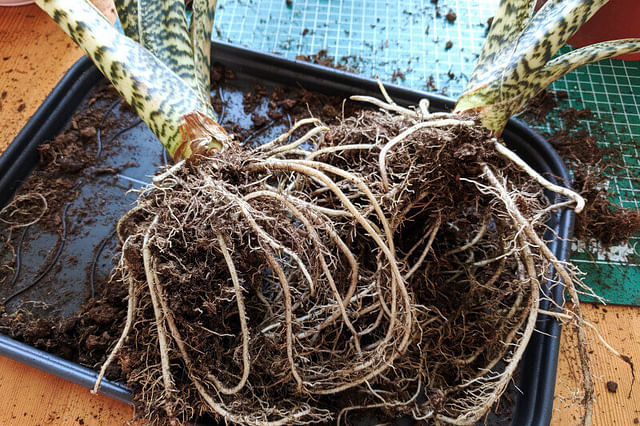
If you want to move your plants from soil to Leca, there are a few steps to go through. It's not very difficult, but it does take quite a bit of time.
First, prepare the Leca: Grab Leca balls, a pot with drainage holes, get some water, and a pH-balanced nutrient solution. Rinse the Leca to remove dust, then soak them in water for at least 24 hours. Next, gently remove your plant from its old pot, shake off as much soil as you can, and rinse the roots under lukewarm water, trimming any damaged parts.
Next, clean the pots thoroughly, and prepare the pot by placing a layer of wet Leca balls at the bottom. Put your plant on top of this base layer and fill around the roots with more Leca until the pot is full and the plant is stable.
When it comes to watering your plant in Leca, water it thoroughly at first, but make sure the water level stays just below the roots to encourage them to grow into the Leca and prevent overwatering your plant.
If you're looking for tips on a few specific plants, I've prepared a few guides that might help you to move your plants to Leca: How to grow an Alocasia Zebrina in Leca, How to grow a Philodendron Birkin in Leca, How to grow a Monstera in Leca. I've had these plants in Leca for a few years and I'm still as excited about it as I was when I first transitioned them!
How do you fertilize your plants in Leca?

Earlier in this plant care guide, I mentioned that Leca doesn't provide your plants with the nutrients they need to grow properly. Leca only takes care of watering your plants. As such, you'll need to add nutrients to the water yourself. These nutrients are slightly different from the fertilizer you would give to plants growing in soil. But what are the key differences?
What are hydroponics nutrients (fertilizer)?
Hydroponics nutrients (or fertilizer) contain special ingredients that your normal plant fertilizer doesn't have. Normal plant fertilizers don't need these ingredients, because the soil provides your plant with these nutrients. Since Leca doesn't contain any nutrients, the hydroponics fertilizer needs to add these missing ingredients to keep your plant healthy. This is why you can't use normal fertilizer for your plants in Leca: it's missing key ingredients.
How do you use the hydroponic fertilizer with Leca?
When you're ready to water your plant that's growing in Leca, you'll need to prepare the water first. You'll need to add the hydroponic fertilizer to the water you use to water your plant and mix it well. This will help to dilute the fertilizer with the water and turn your plain old water into a hydroponic nutrient solution. You can water any of your Leca-growing plants with this nutrient solution and you're done! It's a little bit of preparation before you water your plant, but that's all you'll need to do to take care of a plant that's growing in Leca.
How often should you replace the Leca in your plant's pot?
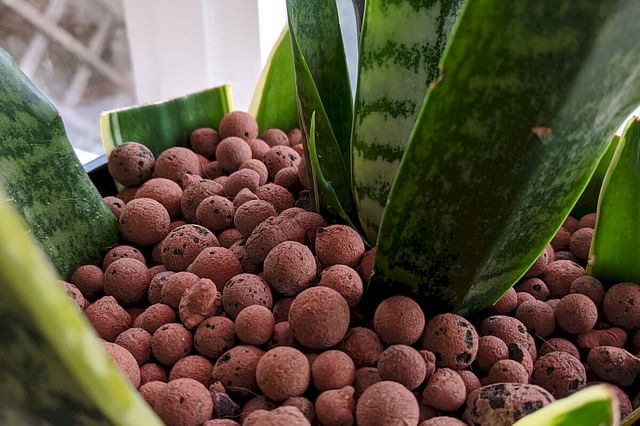
Leca is a renewable growing medium, so you can keep reusing it for many different plants. So you might wonder why you'd need to replace it at all, isn't it supposed to last forever?
The reason you need to replace your Leca every 1-2 years is that the pores of the clay balls will start to clog over time. The hydroponic fertilizer will, over time, collect on and in the clay balls. If you've used Leca for a while, you might notice some of the balls are turning white or are getting white spots. This is salt buildup.
So every 1-2 years, you should refresh the Leca. Refreshing Leca means you remove, rinse, and soaking the Leca in clean water to remove any buildup. If you want to clean the Leca balls well, I suggest you let them soak in boiling water. This will kill any potential pests and will clean the clay balls at the same time. Use a heat proof container for this, like a ceramic, water holding plant pot and let it cool down by itself, this could take 30 minutes or more.
After you've reused the clay balls many times, you might notice some start to crumble. This is, unfortunately, what happens when you've reused them enough. They're really tough, so it can take years before they start to crumble. If this happens, it's time to by a bag of fresh Leca.
Can Leca be used for any type of plant?
Not all plant will like to grow in Leca, so you might be wondering which plants will do well when growing in Leca. Leca is great for plants that thrive in well-drained and oxygen-rich conditions. Orchids, aroids (like Monstera and Philodendron), and tough houseplants like Pothos and Spider Plants grow well when you've planted them in Leca.
Leca is also good to use when growing leafy greens and herbs. I've put together a guide that goes into more detail about which houseplant will grow well in Leca in Which plants can you grow in Leca?.
Are there any plants that should not be grown in Leca?

In the previous section, we've looked at a few plants that will do well in Leca, but that also means that there are plants that are not a good fit for Leca. It's pretty tough to list all plants that won't grow well in Leca, so I've created a list of types of plants that won't do well in Leca instead.
Carnivorous plants
Carnivours plants like Venus flytraps, pitcher plants, and sundews are good examples of plants that will struggle in Leca. They thrive in nutrient-poor, acidic environments and love conditions that are always moist.
Leca isn't the best for them because it doesn't provide this environment naturally and doesn't hold moisture as well as sphagnum moss or peat. Those are way better options for keeping these plants happy!
Moisture-loving plants
You water plants in Leca by keeping water in the pot at all times, but this doesn't mean it's a good growing environment for plants that thrive in consistently moist and high-humidity growing environments.
Plants like ferns and Calathea absolutely need consistently wet or high-humidity environments to thrive, which Leca can't offer. Leca drains moisture too quickly for these plants, which keeps the humidity levels lower as well.
Plants with very fine roots
Some orchids, like Phalaenopsis (moth orchids), and very fine-rooted herbs can be a bit picky about their growing conditions. The larger size of Leca balls might not give enough support for these plants, making it tough for them to establish a stable root system.
Basically, if you're dealing with plants that have super fine or delicate roots, bigger Leca balls might not be the best choice. They just can't give the roots the grip they need to really settle in and thrive.
Heavy feeders
When it comes to heavy feeders, I just want to mention that it's not impossible to grow these types of plants in Leca, but it's very tricky. Plants like tomatoes and peppers require a lot of nutrients, which can be tough to provide consistently.
To keep these plants happy, you'd need to fertilize quite often and closely monitor the nutrient solutions. It's definitely doable, but just be prepared for a bit more effort! I don't recommend this for beginners, so stick to soil if you're just starting out or simply don't want to spend too much time on your plant.
Plants preferring soil microbes
The last types of plants that won't do too well in Leca are plants that heafily rely on soil. Many terrestrial plants grow well because they have a symbiotic relationships with soil microbes and fungi. These partnerships help plants with absorbing nutrients.
Leca is "dead" and can't offer this type of growing environment, so these types of plants will have trouble to absorb nutrients and grow on their own.
The most common issues with growing plants in Leca
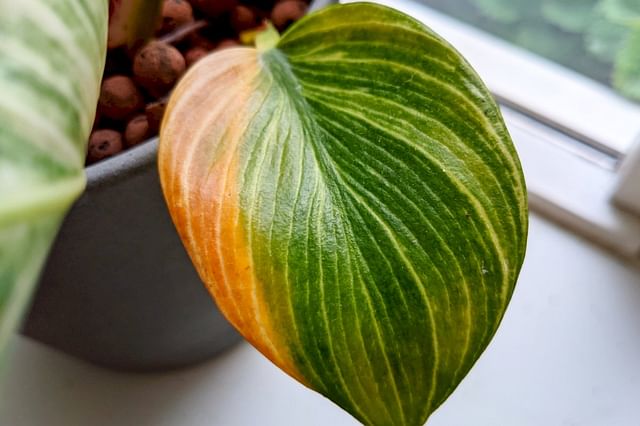
Leca is usually low-maintenance and you only really need to think about watering your plants. But sometimes, you may notice some problems on your plant. Here are some common issues:
Root rot
Root rot can happen when the roots are growing in standing water at the bottom of the pot. To help prevent this, make sure the water level stays below the roots. A base layer of Leca can help with this. Regularly check the water levels to make sure your plant has enough water, but not too much.
Algae growth
Algae can be a problem with Leca balls if they get too much light. To fix this, try using dark or opaque pots to cut down on light exposure and make sure to clean the Leca and the pot regularly to keep the algae away.
Nutrient deficiency
If your plants are showing signs of nutrient deficiency, like yellowing leaves, just grab a balanced, pH-adjusted nutrient solution made for hydroponics and follow the manufacturer's directions for mixing and use.
Salt buildup
Over time, salts from fertilizers can build up on Leca and harm your plants, so make sure to rinse the Leca with some clean water every few months. Soaking it in distilled water can also help flush out the salts. Once every 1-2 years, it's a good idea to refresh the Leca in the pot, as we've seen in an earlier section.
Drying out too quickly
Sometimes Leca can dry out too fast, stressing out your plant. To fix this, you can increase the humidity around the plant or set up a self-watering system to keep the moisture levels steady.
Pests
Although pests are less common in Leca than in soil, they can still show up. Just keep an eye on your plants and Leca regularly for any signs of pests. If you spot any, remove the affected parts and clean the Leca. Use pest control if needed.
Transition stress
When you're moving plants from soil to Leca, they can get stressed and show signs like wilting or dropping leaves. Just be patient and keep their conditions stable by giving them consistent light, temperature, and humidity to them adjust. And remember, don't overwater them during this time!
Conclusion
Leca is a great way to water your plants without overdoing it. Your plants will be healthy and thriving without the effort it takes to do the same for plants in the soil! In this plant care guide, we've looked at what Leca is, how you can use it, and what its benefits are for you and your plants. I hope I've convinced you of its ease of use! Be sure to share this guide with your friends and family so they can learn how to take care of their plants too.
Thank you for reading this post! I hope it helps you to keep your plants healthy and beautiful! If you're looking for more guides on specific plants, you can always request a plant guide to get a guide for the plant you have trouble with.
Test your plant care knowledge
Quiz completed!
Want to learn more? Sign up for my newsletter to receive free tips in your inbox!
Sign up now!












